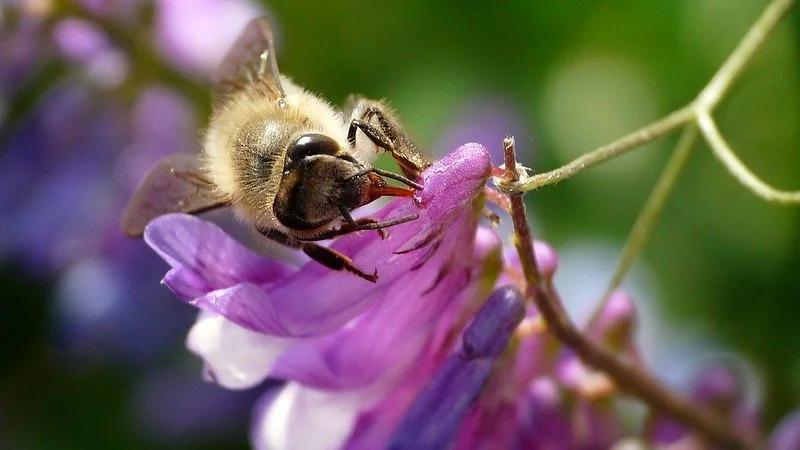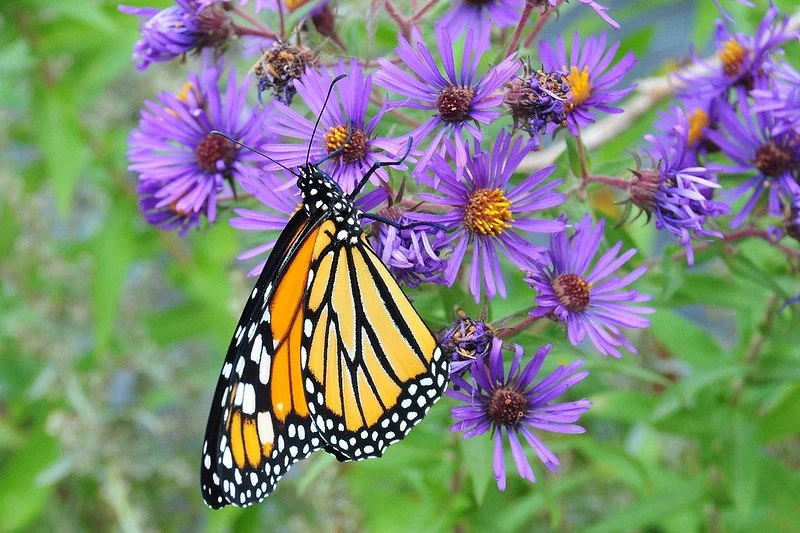Flower Shape and Pollinators
Several weeks ago, we looked at how flower color influences pollinator choice. This month, we’ll dive into flower shape and why it matters.
At a basic level, flower shape affects whether a pollinator can land on the bloom and access nectar or pollen inside. Four traits make the biggest difference:
• Tongue length – Can the pollinator reach deep into a tube, or only feed on open structures?
• Hovering ability – Does it need to perch, or can it hover while feeding?
• Body size – Larger pollinators can sometimes muscle into tubular flowers that smaller insects can’t.
• Vision limits – Some pollinators need bigger, more open targets, especially under low light.
Bees
Bees can’t hover-feed, so they need flowers that let them land.
• Short-tongued bees (like mining bees) stick to open disk flowers such as coneflower and black-eyed Susan.
• Medium/long-tongued bees (like bumblebees) can handle both disks and short to medium tubular flowers such as penstemon. Their larger size also lets them push into flower tubes that smaller insects can’t.
• Nectar robbing is another strategy: some small bees chew holes in tubular flowers to bypass the normal entrance.
Bumble Bee Pushing Open Tubular Flower (Small’s Beardtongue)
Butterflies
Butterflies can’t hover either, so they need broad landing platforms.
• They visit disk flowers (coneflowers, asters) and especially flat-topped clusters (butterfly weed, joe-pye weed) where they can feed from multiple florets at once.
• Their long tongues also allow them to reach nectar deep inside tubular flowers like phlox or trumpet vine, beyond the reach of bees.
Moths
Moths are close relatives of butterflies, but many fly at night.
• Day-flying moths (like sphinx moths) hover like hummingbirds, probing nectar from tubular flowers such as phlox and bee balm.
• Nocturnal moths rely heavily on scent, often visiting pale, night-blooming flowers like evening primrose.
• Clustered flowers are especially attractive: they release more scent and create bigger targets in dim light.
Hummingbirds
With their long bills and ability to hover, hummingbirds are perfectly suited for long, tubular flowers.
• These flowers often have stiff, outward- or downward-facing tubes, such as scarlet sage, coral honeysuckle, and red buckeye.
• Because hummingbirds hover, their flowers don’t need landing pads like those for bees or butterflies.
Beetles
Beetles are often called “mess and soil pollinators.” They crawl around flowers, eat pollen and floral tissues, and sometimes defecate in the process.
• They prefer large, bowl-shaped flowers that are sturdy enough to handle their clumsy foraging — like magnolias or Carolina allspice.
• With short tongues, beetles focus on accessible pollen. Exposed reproductive structures give them easy food and also increase accidental pollination.
• Strong fragrance often matters more than shape, but shape ensures durability and access.
Flies
Flies fall into two broad groups:
• Flower-seeking flies (hoverflies, bee flies): short-tongued, so they prefer flat, clustered flowers like yarrow, dill, and mountain mint, where nectar is easy to reach.
• Trick-taker flies (carrion, flesh flies): drawn to bowl-shaped or enclosed flowers that mimic decaying organic matter. Inside, they crawl around looking for food or egg-laying sites, spreading pollen in the process.
Takeaway
Flower shape determines whether a pollinator can land, reach nectar, and forage efficiently. By planting a mix of open disks, flat-topped clusters, tubular flowers, and sturdy bowls, you’ll support the widest range of pollinators — from bees and butterflies to hummingbirds, beetles, and flies












